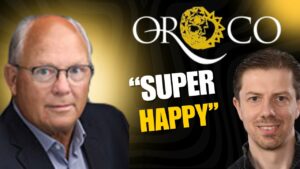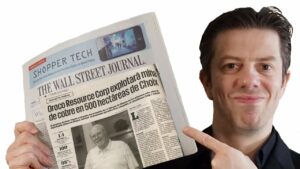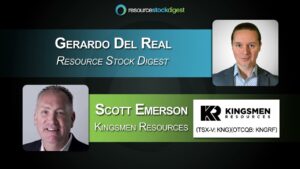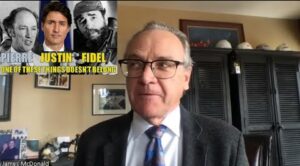Executives
Bridget Freas – Director of IR
Mitch Krebs – President and CEO
Peter Mitchell – SVP and CFO
Frank Hanagarne – SVP and COO
Joe Philip – SVP and CDO
Hans Rasmussen – VP of Exploration
Analysts
Michael Dudas – Stern Agee
Chris Lichtenheldt – Dundee Capital Market
John Bridges – JP Morgan
Andrew Kaip – BMO
Coeur Mining Inc (CDE) Q4 2013 Earnings Conference Call February 20, 2014 11:00 AM ET
Operator
Good morning. My name is Valarie and I’ll be your conference operator today. At this time, I would like to welcome everyone to the Fourth Quarter and Year-End 2013 Financial Results Conference Call. All lines have been placed on mute to prevent any background noise. After the speakers?f remarks, there will be a question-and-answer session. (Operator Instructions). Thank you and I would now like to turn the call over to Bridget Freas, Director of Investor Relations. Bridget you may begin.
Thank you, Valarie. Welcome everyone to our fourth quarter and full year 2013 earnings conference call. I am Bridget Freas, Director of Investor Relations. We have posted slides to accompany our remarks on our website at www.coeur.com.
Please review the cautionary statement on slide two and the risk factors in our 2013 Form 10-K for risk and uncertainties that could cause actual results to differ from today?fs forward-looking statements.
Joining me are Mitch Krebs; Peter Mitchell; Frank Hanagarne; Joe Philip, and dialing in from Palmarejo is Hans Rasmussen. Mitch.
Thanks Bridget, hello everyone and thanks for joining is today. I know it?fs a busy day and busy time here with year-end results. We?fre going to start following a different approach and format for these calls starting with today?fs call. I?fll cover a few key highlights and then we?fll get right into the Q&A, we want to make this time as efficient as possible for you guys and don?ft want to just sit here and read back to you what you can already reach in the release and in our slides. So I?fll have about 10 minutes of comments and then we?fll get right to it, you can ask anyone here anything you?fd like.
Another thing we?fll be doing differently going forward is how we report our costs. There are four big changes that I want to highlight; one is, as you saw in the release we?fll start reporting all in sustaining costs per silver equivalent ounce metric for all of our operations combined. Now that number of last year was $18.94 for the full year and it actually dropped in the fourth quarter to $16.92, which was about a 12% decline.
The second change is that we?fll report our primary silver mine costs on a cost applicable to sales per silver equivalent ounce. And then we?fll do the same for our one gold mine Kensington. So the three primary silver mines in the fourth quarter their cost on that basis were $11.97 and for the full year were $13.81. And then applying that same methodology to Kensington the cost per ounce were $667 an ounce in the fourth quarter and $890 an ounce for the full year. Slide eight in the deck shows these metrics for each operation.
The third change is going away from the byproduct calculation on costs to using silver equivalent ounces sold. We just think that?fs a more accurate depiction of the true margins from our operations. I don?ft know about you guys but we spend a lot of time talking with investors about a mine like Palmarejo where our cost on a byproduct basis are $2 and change per ounce and how to get to a margin per ounce from that number, whereas doing it on a silver equivalent basis for Palmarejo last year that cost is $13.25. And that?fs a lot easier to tie back then to the true profitability and an accurate metric and measure for each of our operations, especially for Palmarejo and for Rochester where gold makes up such a big component of the business. In the case of Palmarejo that?fs almost 50% of the revenue. So deducting that as a byproduct really distorts things.
And we just think that overall we need to do everything we can as a company to simplify the way we report our company?fs results, especially for those investors that aren?ft as familiar with our industry. The more generous type of investors, I think they often times get scared away from our sector and companies like Coeur when they see these sometimes quirky metrics. And so we?fre trying to make the way we report something that?fs easier to explain to people outside of our industry. And I think it?fs important that we?fre trying to track those types of investors into our sector.
Another thing we spend a lot of time talking about with investors is Franklin Nevada royalty that applies to 50% of the gold production out of Palmarejo, and how that?fs handled and where that?fs picked up. And it is confusing, because as a minimum obligation there and a lot of you guys know this as well as anybody. But there is a minimum obligation of 400,000 ounces tied to that royalty, and we?fll hit that probably in about 2.5 more years of production out of Palmarejo. But until then that royalty is treated just like a debt. It?fs on the balance sheet; you will see the outflows associated with in the financing section of the cash flow statement.
So it doesn?ft hit our production cost, and it is truly an obligation of the entire company. Once we hit that minimum, then it will flip into operating cost at Palmarejo. But until then it?fs treated like I said, like a debt. Now in 2013, we paid Franco about $57 million in total on that royalty. And if that was in our production cost that would add about $1.73 an ounce on a silver equivalent basis. So Palmarejo alone that $13 per silver equivalent an ounce number I mentioned will be about $4 an ounce higher and again I think that?fs important just for everybody to understand where it is and where it isn?ft and why it?fs not in our cost right now. Obviously, people kind of adjust for that accordingly.
In slides 12 through 15, then show each of our operations and their historical cost by quarter going back to 2011 on the byproduct way that we have been doing it and then on the silver equivalent methodology going forward. Starting then with next quarter, we will drop the byproduct way of reporting costs. So I could bring in four layout, some of our 2013 and fourth-quarter highlights. One thing we?fre sliding is a little over $15 million worth of metal that shift in the fourth quarter but weren?ft picked up in the sales that went to the balance sheet. So that is something that?fs still over here into the first quarter, and that?fs slightly skewed our fourth quarter revenue.
Slide five outlines the framework that we have been following for over a year now to help us maximize cash flow and reduce cost at our sites and reduce our capital spending as well. It?fs been leading to great results, obviously this work is ongoing. Capital spending is down big time from where we were just a few years ago. Our guidance for this year is $65 million to $80 million, with almost all of that going towards just sustaining and capitalized exploration. And the results are really starting to bear themselves out. When you look at our cost per silver equivalent ounce over the last year, three of our four operations are down pretty significantly. Palmerajo by 27%, Kensington by 33%, Rochester by 6% and San Bartolome was pretty flat. So we are making some really good progress and like I said those efforts are ongoing.
The next key highlights I want to flag is our exploration program and the increase in reserves and resources we announced on Tuesday. You probably saw reserves increased by 16% for silver and 12% for gold even after taking into account last year?fs production and using lower metals prices. Now we chose to go with $25 an ounce for silver and $1450 an ounce for gold. We spend a lot of time thinking about that and we think those reflect reasonable long-term price assumptions. We did also internally run those same reserves at $20 an ounce for silver and $1250 an ounce for gold, and the decline from what we have reported was only about 6% to 8%. So there wasn?ft a lot of sensitivity to running them at lower prices.
We feel comfortable with where we came out in terms of our year-end reserves and resources. Last year, we spent about $34 million in total on exploration. About 11 or 12 of that was capitalized, focused just on reserve conversion work. And with those dollars we have replaced and added a total of 115 million silver equivalent ounces of just reserves. And that?fs all around existing infrastructure, that?fs not La Preciosa, that?fs not anything other than mines where we have existing reserves. And that?fs really good bang for the buck. That?fs about a dime an ounce, discovery cost.
And we all know that a lot of that increase came from Rochester and a big chunk of that increase wasn?ft necessarily due to drilling activities. It was due to the removal of some restrictions relating to that claims dispute that we had in place. But even if you remove all of Rochester?fs increase from our companywide increase in reserves, on our discovery cost per ounce we are in at about $0.45 an ounce. And that?fs a good metric for us when you look at where producing silver company?fs trade between $5 and $10 per silver equivalent an ounce. It really does highlight the fact that we need to keep allocating money to exploration around our existing mines where we have existing infrastructure and resources, because that?fs a great return on those dollars.
And slide 17 provides some additional information on our growth in reserves and resources. Although exploration at our existing mines is our preferred way to grow, there are three other paths we are pursuing for growth that I want to highlight quickly. One is through internal development of existing projects, and our main development project as you know is the La Preciosa project in Mexico. We got that last year when we acquired Orko Silver. The feasibility studies are moving ahead. We are still targeting mid-year this year and we are seeing some opportunities to improve the economics compared to the PEA despite the headwinds of higher taxes in Mexico intended below our price environment, so we are encouraged there.
We also, in terms of growth established core capital late last year. We made an acquisition of a company called Global Royalty. And that although a small contributor to the overall business right now, it is an attractive component to the business with higher margins, the less volatility that comes along with those streams in royalties, and we see some opportunities to further grow that business. We?fre targeting more of the $3 million to $30 million kind of new opportunities to expand core capital and it?fs really effective when you think about the margins that we see in core capital are over twice the margins that we see in the traditional operating side of the business. So to the extent that we can continue to grow core capital we think that?fs a good thing for the company.
We are actively looking at acquisition opportunities. We see some good values out there. some interesting opportunities that come across our desks. It?fs important for us to look at our existing portfolio though and really prioritize opportunities based on the impact that they have on our business. And for us we?fre looking more in terms of anything significant we?fre looking at producing current cash flowing opportunities when we can add another operating leg to the table which will provide us with some additional diversification, reduce our cost, increase our margins, hopefully, further improve our geopolitical risk profile. So we?fre continuing to actively evaluate opportunities like that.
And one of our highest, probably our lowest risk highest new turn opportunities that we have inside our company is Rochester and further expanding that. And that something that over the next 10 to 20 years is really going to be a cornerstone for the company and a key priority. Despite having a disappointing end to last year, we remain very excited about Rochester.
I do want to take a couple of minutes to talk about Rochester?fs performance in 2013 and in the fourth quarter in particular. The fourth quarter was better than the third quarter but we did not see the level of ounces out of the pads that we were expecting. But one factor was a delay of getting permission from the state to begin leaching activities in the fourth quarter and that all led to a simply running out of time until the ounces begin to flow out of the new pad.
As part of our year end activities we?fve reviewed and updated our own recovery models. We do expect to be more accurate going forward on a short term forecasting. We?fve always been confident in the long term recovery curves at Rochester but heat bleach operations are not an exact science as you guys know. That said, we do feel good about our 2014 plan and guidance for Rochester. And as we go through the year and as additional ounces will build as more material is crushed, stacked and leached which mean production during each quarter this year should be higher than the preceding quarter. So we look forward to a good year. And that will really I think help around out our whole portfolio of mines in terms of operating consistently and clicking on all cylinders.
Another operation I want to spend just a couple of minutes on before wrapping up is Palmarejo. We did make a good decision there late last year to not complete the development and put the underground mine into production there at Guadalupe during 2014 here given lower prices. It just wasn?ft the right economic decision. And until we move other ounces into the mine plan to offset those ounces from Guadalupe that we?fve decided to remove will reflecting lower expected 2014 production levels at Palmarejo in our guidance.
Based on the drilling that was done in the second half of last year and additional drilling taking place now we?fre optimistic that we will more than offset these ounces in areas where we?fre already mining particularly in the Tucson?]Chapotillo pit and by extending our underground mining activities in the 108 clavo. We?fre also looking at how we can mine certain higher grade sections of Guadalupe that would be economical at current prices.
So to wrap up, 2013 was a transitional year for our sector and for our company. Over the past two years, we?fve been upgrading this company in ways that we believe will lead to the kind of consistency and performance our stockholders demand and deserve. We?fve been working to instill a new mentality and attitude, new processes and systems to improve our execution, our planning, and that will help us better mitigate and manage risks as an organization. We?fve been pushing up for greater centralization to ensure more consistency and standardization, we?fve implemented more meaningful and powerful incentive programs that reward performance and promote alignment around certain key priorities and objectives throughout all levels of the organization. And we are now starting to see the result of this work.
Other than Rochester?fs fourth quarter, we had a really good quarter and we?fre off to a really solid start here in 2014. So, as a management team here, we?fre going to continue to keep our focus on maximizing margins and cash flow and on generating returns on all the investments that we make, whether that?fs in people, exploration, new projects, expansions, or acquisitions. So thanks again for joining us on the call today. And we?fll go ahead Dannie and move to any questions that you have.
Question-and-Answer Session
Operator
(Operator Instructions) Your first question comes from Michael Dudas.
Michael Dudas – Stern Agee
Hey. Mitch and everybody good morning and I commend your new outlook from the financials and how you?fre thinking about it and I think it?fs going to be helpful.
Thanks Mike.
Michael Dudas – Stern Agee
First I guess with Palmarejo, continuing your thought about some of the drills results to offset Guadalupe’s removal, when will we get better sense of that and is it little too early to see that we can find some more ounces going into 2015 given some of the work you done?
And Hans I know is calling in from Palmarejo, feel free Hans to chime-in or Frank but we are, as we speak updating our resource model and our mine plans to incorporate all that drilling from late last year. As you know it?fs an ongoing process that never really does stop but I do think here in the first half we will have some updated mine plans that will reflect even more drilling here in the early part of this year but we will communicate it and that will give a little more visibility and then as we go into 2015 and see the results of what we all think is a much better, more positive, more strategic drilling plan at Palmarejo here in 2014. I think that?fs really when we will see some greater visibility in terms of that, and be able to communicate it externally in terms of the longer term view for the Palmarejo. Hans, I don?ft know if you have anything to add to that from Palmarejo?
Later in the year, we will definitely have an update from Palmarejo, right now we are looking at the programs and it probably will be the most focused program ever in terms of taking multiple resource models, sitting down with multiple groups within Coeur and deciding actually where to drill. And out of our decisions here which are occurring right now in Palmarejo, we are focused on mainly the open pit, extending life of the open pit because that?fs the most of the tonnes and grades are coming from right now. And then later we will work on the extending the life of the underground but that?fs what I am doing like you said and update will come later in the year. But the future looks really good right now, I am looking at the models and where we are going to drill.
Okay. I hope that helps Mike.
Michael Dudas – Stern Agee
I appreciate that. Yes, it does. Second, I have two more questions, one, from La Preciosa, can you share some critical path thoughts or what we have been seeing as you get closer to finishing the study midyear, is it more from a recovery capital productivity issues and how much of an offset on the tax side, is being coupled with the economics?
Joe, you want to take that and Peter, you want to chime-in on the tax piece after Joe?
Mike, this is Joe. We have been having a lot of fun with the La Preciosa study here in last couple of months. Everybody has talked a lot about the negative aspects of the new mining royalty but there is actually some very positive things going on as well. Mexico has opened up the ability to generate electricity and we found some very significant opportunities to save money on our power cost. We are very pleased with the results of our metallurgical studies and finding some ways to trim down the capital, so we are quite excited about it.
And then strictly from a tax perspective, the tax does add some additional cost to our existing operation of Palmarejo and also La Preciosa, they are measured in 2014 in the sort of $2 million to $3 million range. And in terms of the impact on La Preciosa, we are looking at ways to mitigate the impact, cut the tax thing such as operating leases for the mining fleet and other areas to address ways to reduce the impact of the EBITDA tax on La Preciosa and areas that will be more than offset by the benefits which was identified.
Michael Dudas – Stern Agee
Excellent, Peter, thank you. And just one final quick question on core capital, how do you see it a year from now? Do you anticipate maybe getting more like royalty companies to acquire or do you anticipate you will see some opportunities that you will be acting on to increase the cash flow. So, it sounds like a very interesting concept to turnover the company and of course with returns you should want to, kind of make growth pretty quickly? Thanks.
Yes, it is interesting and it is a differentiator for us and our company and attractive and complementary business to the traditional mining side. We are focusing on cash flowing royalties that can have an immediate impact and in a year from now, I think this year, Mike, our free cash flow will be around $10 million out of core capital. I think it?fs easy to see it more than doubled in a year from now in terms of current cash flow. There are some, with the challenging capital markets that we have seen. Companies looking to obtain funding from core capital through the sale of a royalty or stream, we are evaluating those. It?fs not our number one priority but it does give us another arrow in the quiver as we think about ways to expand the business and achieve higher return. So, that?fs kind of how we view core capital.
Operator
Your next question comes from Chris Lichtenheldt.
Chris Lichtenheldt – Dundee Capital Market
Good morning everyone. I want to say the same. I like this cash cost and the transparency with respect to the royalty, et cetera. It is all very helpful. My first question is with respect to Kensington. Earlier this week you obviously released a significant, your reserve included a significant decline in the grade, reserve grade for Kensington. I wondering if you can help us understand a little bit, or what you hope to do to offset the lower grades going forward in order to make that mine profitable?
Frank you want to take that?
Hi Chris this is Frank, the reserve grade that you see in our recently published statement is a reflection of ore that will be delivered to the mill but also the development ore, it means the classification as a reserve although at a lower grade development material that has to be moved to get out higher grade material. So as we — that overall pull the reserve grade down incrementally year-over-year. Now that?fs what?fs encompassed in that reserve grade in the times involved, as mine and carry out our mine plans we still target delivery of materials to the mill, point of arrays between 0.18 and 0.19 ounces per tonne.
And we have the flexibility to decide depending on actual development rate taken on a day to day basis whether it?fs just wasted or it can be stock piled for further future years, we have those options and we take full advantage of that as we carry out the operational plan for the mine.
And we actually have developed the capacity or the ability to share — remove within the process facility a low grade stream of material, which really puts us in a position to be able to produce some of that what is lower grade development or coming out of the mine, to a sizing step remove low grade material and strip that off to the side and substantially upgrade the grade of material and advances on to its flotation plan.
So we try to keep the mill at 0.18 to 0.19, we?fre able to do a few things in the grinding circuit to remove our sub-economic grade material which enhances the grade of what?fs in the flotation plan and we have been doing that and doing this, late in 2012 we expanded the capacity to do this in 2013 and have further plans to take further advantage of this going forward.
So when we talk about our four buckets of maximizing cash flow and one of them is revenue enhancements, this reject circuit is a great example of our revenue enhancement opportunity, fair to say?
That?fs right, that?fs the criteria very well.
Chris Lichtenheldt – Dundee Capital Market
That helps, that definitely helps. So the low grade material in Kensington is in the reserve because you have to mine it anyway, is that part of the reason?
No we have to remove it to get out other ore but it?fs also met the criteria to be considered a reserve. It is economic.
Chris Lichtenheldt – Dundee Capital Market
Okay, I?fll leave it out there for now. And secondly, with respect to the Palmarejo reserve, is there any Guadalupe in there? Or should we assume you have removed all that now?
No it?fs in there, with reserve prices of 25 and 14.50 as economic and reserve, so that sits in the total Palmarejo reserve, we just chose not to prioritize those tonnes.
Chris Lichtenheldt – Dundee Capital Market
Would you be able to tell us how many tonnes and ounces?
I know it?fs broken out in the PR that we have filed. I don?ft have numbers here handy, we can certainly point you to those.
Chris Lichtenheldt – Dundee Capital Market
Yes. We can dig it out then. I appreciate that. Then my last question quickly in Rochester in the third quarter you mentioned part of the issue is the permitting, et cetera. I do recall from the last conference call, I think there was a lot stacked at the beginning of Q4 that I guess we have to assume didn’t produce as expected. Can you give us a little color on what the leach cycle actually is there? How much of your recovery you achieve in the first month or three months, based on what you previously expected?
We have a recovery profile which tells us that over 18 year period our maximum recovery for silver will be 62%. That relates to that very long time into the near-term and the first year of leaching of crushed material we averaged a 75% recovery rate. Any incidental run of mine material that we put out early there would recover at about 35%. That?fs in a one year timeframe. And then it?fs about 60 to 90 day cycle that we need to time our movement to threshold our after breakthrough has been achieved and that?fs when we know that solutions grades will decline and sort of how we manage things in the near term, long-term model actually quarter-to-quarter. So those are the relative timings that we work out.
Chris Lichtenheldt – Dundee Capital Market
How are those different from gold?
Gold recovers very, very quickly, we have an ultimate recovery of goal of 92% I don?ft know if it?fs placed within probably the first six months of reaching that but we have it under reach. So it?fs nice to get the goal out more rapidly.
Operator
Your next question comes from Craig Johnston.
Hi there. All my questions have been answered. Thanks.
Okay.
Operator
Your next question is from John Bridges.
John Bridges – JP Morgan
Just wondered if we could dig a bit deeper into the disconnect at Rochester on the recovery. You mentioned the delays with permits and that sort of thing, but is there something else happening there which is new and affects the outlook for the operation?
No. John this is Frank. Its combination of things that we?fre on in late last year and we?fve had a number of construction projects underway and where the Q1 had opened the door to begin leaching on fresh ore was completed at the end of the third quarter. We began leaching the material had been stacked over two to three month prior to that on October 1st that was all related to phase one of the expansion but there was a phase two which included increasing capacity on that leach pad up side hills of the valley that it is nestled in. You can envision that heap leach pad, that area that we filled in with ore and also began leaching during the phase two of the project. It?fs sort of like a horseshoe shape. We were able to get substantial volume of ore placed in there in the fourth quarter and under leach as we sequence with the environmental permit timing and cycle.
There were some short-term delays in receiving these permits, but generally we did pretty well. It was really just that volume of ore that was placed behind the buttress, which ties to what we call the phase one expansion and it?fs depth, that we have to know to rely on when will it breakthrough and start to report to the process facilities. That time is a bit longer than we had expected.
John Bridges – JP Morgan
Okay.
We did get pretty rapid breakthrough in those thinner sections that went around that horseshoe I am trying to describe. We did get a nice bang out of that, but it was offset by the center of mass for the whole pad which was the central core, and it was producing but at lower grades, and volumetrically it kind of diminished the effect that we got out of that horseshoe.
John Bridges – JP Morgan
Okay. So you grow much bigger in reserve to go out there so it?fs going to keep you busy for few years?
Yes.
John Bridges – JP Morgan
Thanks a lot guys. Good luck.
Thanks.
Operator
The next question comes from Andrew Kaip.
Andrew Kaip – BMO
Look I?fve just got a question on the corporate level last year?fs corporate G&A escalate quite rapidly with the move to Chicago and now you?fre forecasting somewhere in the $43 million to $48 million range. How should we expect that to flow, should it be slightly higher in the first half of the year and then declining or do you think you?fre going to see it stabilize and be pretty constant through the year?
Yes, Andrew its Peter. Our anticipation is that?fs going to be pretty level loaded through 2014 with that and certainly the impact to drop from 2013 to 2014 relates to having completed the moves at the end of September as well as some other cost but during 2013 some legal expense and consulting expense some related to some trade back of the transaction so that?fs completed and move itself as well.
Again to add to that Andrew is 50 year but it without a doubt last year as we saw lot of companies cutting back G&A we were going in the opposite direction but that can do a little bit of a unsettling feeling but I just know we were feel confident and I think as we get here into 2014 we?fre seeing the benefits of having of corporate office that?fs well designed to support the kind of company that we are. And for years we did have that and so for lot of unique reasons going in the opposite direction than a lot of companies last year is exactly what we needed to do to just the kind of catch up from an organization standpoint.
And I think if we really want to have the kind of consistent results, better planning, better execution that we all wan there at this company we need exactly what we have in place now. And I think when you look at it on a G&A as a percent of revenue and I think now we?fre finally in the kind of middle of the pack whereas before I think we were running too lien and without the kind of resources and skills that a company like ours need. So I think what we?fve done in 2013 has really put us in a position to be the kind of company we want to be going forward.
Andrew Kaip – BMO
All right. And at certain times when you ramp out on infrastructure you probably ramped to a larger capacity than what you think do you think that there are potential savings within your corporate organization that you?fll be able to realize over the next couple of years?
Sure. We put ourselves in a position to be very scalable. So as we grow G&A doesn?ft need to grow around and that?fs as part of the plan so I think from that perspective I do see on a relative basis or on a percentage of revenue basis it would decline as we grow as we plan to if we were in a price environment that require us to go the other direction sure we could pull in the horns if we needed to nearly sensitive to cutting into the bone and putting us in a position where moves the ability we want a high efficient and quality company.
And so I think putting in place what we have now and staying we?fre going focusing on how we can drive more efficiencies out at the operating level and in the projects and in our planning that?fs where the savings is really going to come.
Andrew Kaip – BMO
All right, thanks very much.
Thanks.
Operator
There are no further questions at this time. I?fll turn the call over to Mitch for closing remarks.
Okay, well we appreciate you taking the time again now you?fre busy as I think you?fve heard from all of us we?fre excited about the year ahead and we?fll remain focused on operating our mine safety and continuing to reduce our cost and delivering on our guidance and the expectations that we set. We look forward to updating you as our progress advances over the course of the year. And thanks again for your time this morning.
Operator
This concludes today?fs conference call. You may now disconnect.
Copyright policy: All transcripts on this site are the copyright of Seeking Alpha. However, we view them as an important resource for bloggers and journalists, and are excited to contribute to the democratization of financial information on the Internet. (Until now investors have had to pay thousands of dollars in subscription fees for transcripts.) So our reproduction policy is as follows: You may quote up to 400 words of any transcript on the condition that you attribute the transcript to Seeking Alpha and either link to the original transcript or to www.SeekingAlpha.com. All other use is prohibited.
THE INFORMATION CONTAINED HERE IS A TEXTUAL REPRESENTATION OF THE APPLICABLE COMPANY’S CONFERENCE CALL, CONFERENCE PRESENTATION OR OTHER AUDIO PRESENTATION, AND WHILE EFFORTS ARE MADE TO PROVIDE AN ACCURATE TRANSCRIPTION, THERE MAY BE MATERIAL ERRORS, OMISSIONS, OR INACCURACIES IN THE REPORTING OF THE SUBSTANCE OF THE AUDIO PRESENTATIONS. IN NO WAY DOES SEEKING ALPHA ASSUME ANY RESPONSIBILITY FOR ANY INVESTMENT OR OTHER DECISIONS MADE BASED UPON THE INFORMATION PROVIDED ON THIS WEB SITE OR IN ANY TRANSCRIPT. USERS ARE ADVISED TO REVIEW THE APPLICABLE COMPANY’S AUDIO PRESENTATION ITSELF AND THE APPLICABLE COMPANY’S SEC FILINGS BEFORE MAKING ANY INVESTMENT OR OTHER DECISIONS.
If you have any additional questions about our online transcripts, please contact us at: transcripts@seekingalpha.com. Thank you!

















